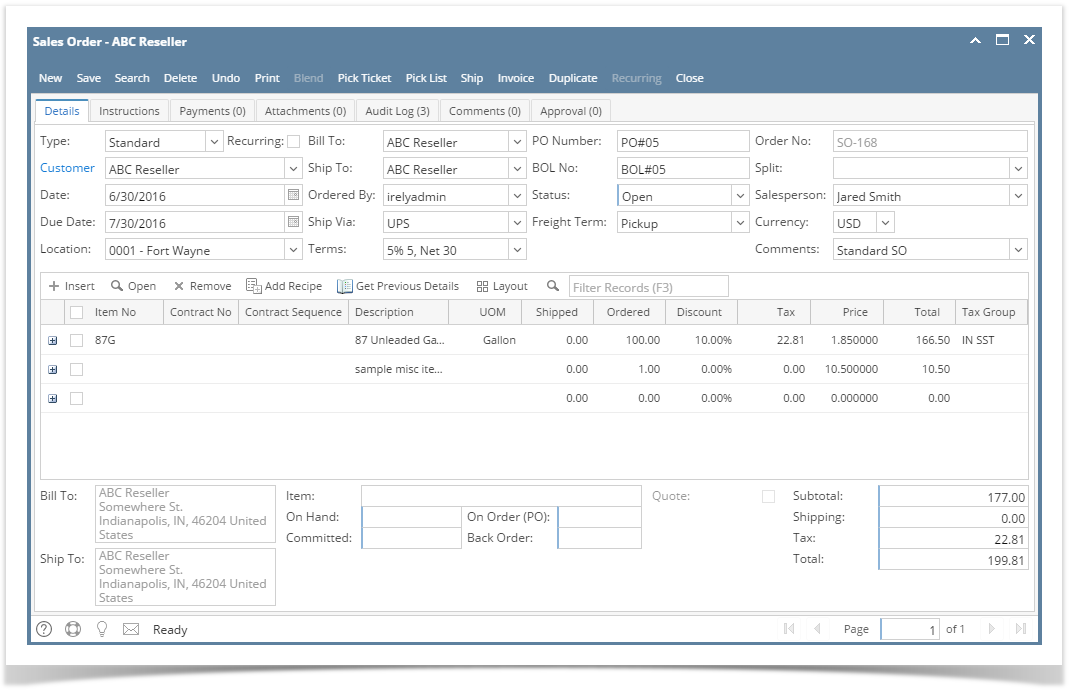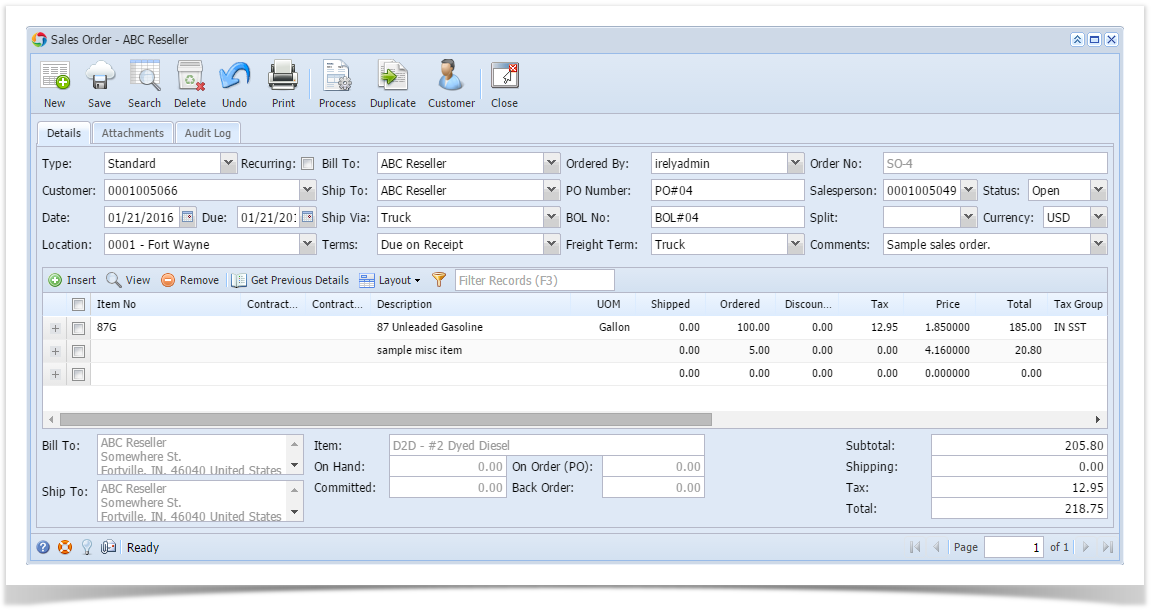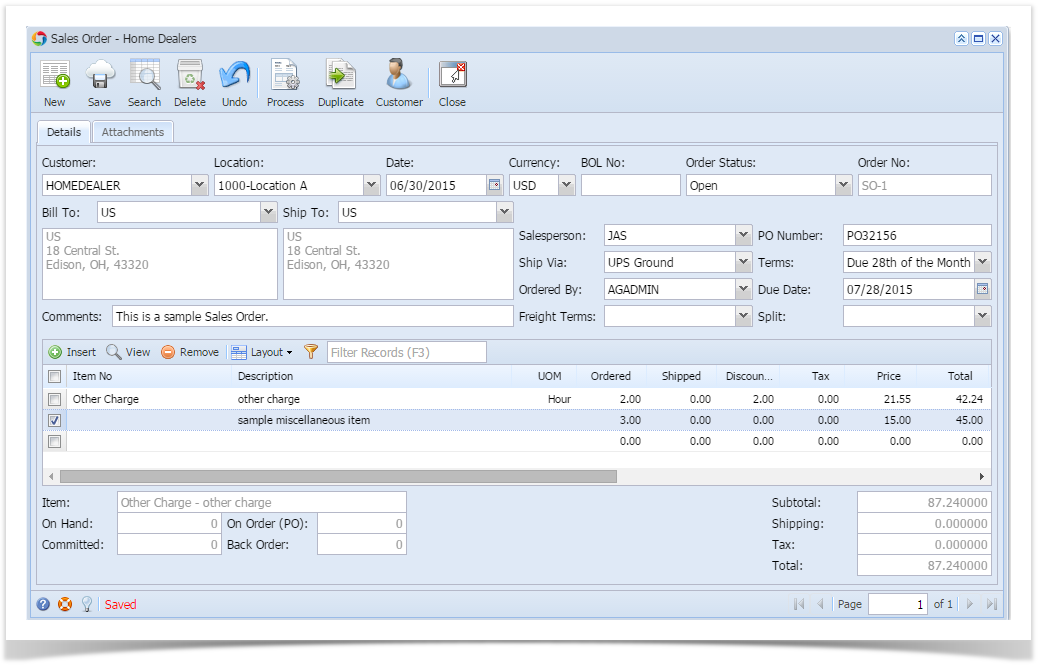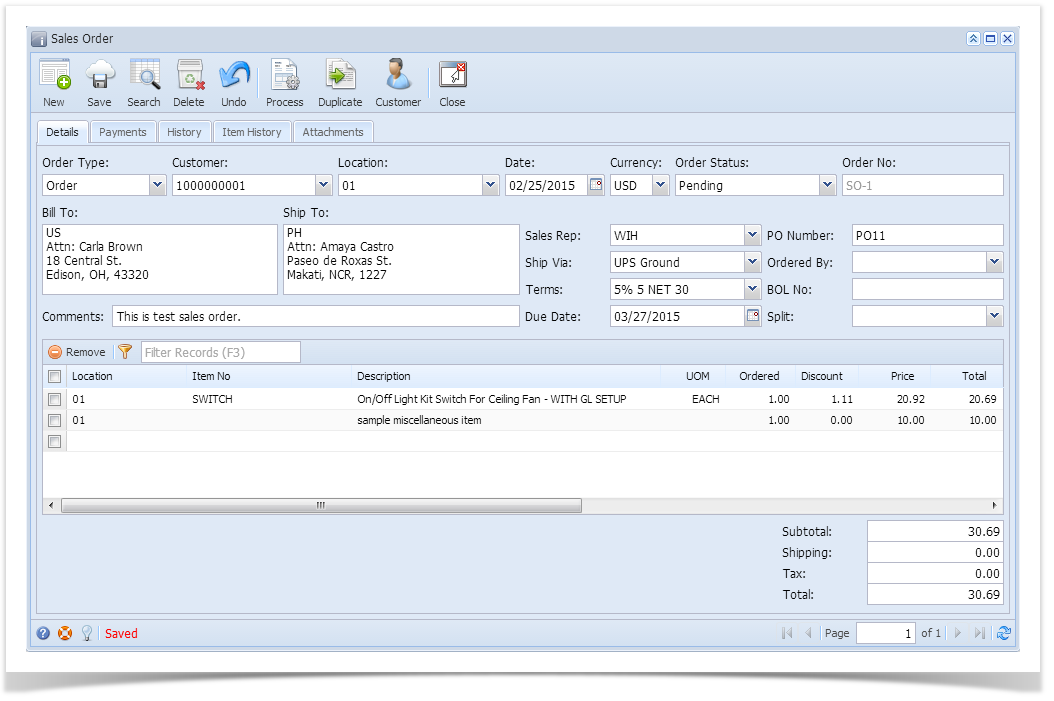Below are the steps in creating a standard Sales Order.
- Open the Sales | Sales Orders menu. If there is no existing record yet, this will open a new Sales Order screen. If not, click the New button on the integrated search grid.
You will notice that some of the fields, like the Type, Date, Due Date, Location, Ordered By, Status, and Currency are already populated by default. You can still change these value if necessary. - Fill out the header details as needed. The required details are Customer, Location, Bill To, Ship To, Terms, and Currency.
- Type is already set to Standard by default. Leave it as is.
- Select the Customer to whom the order is from.
- Select a different Location, Bill To, Ship To, Terms, and Currency if needed. But don't leave these fields blank.
- Enter other details that you see necessary. Refer to Sales Order | Field Description | Header Details to help you in filling out the fields.
- Add details on grid. Refer to Sales Order | Field Description | Grid Details to help you in filling out the fields. Note that UOM is a required detail.
Complete filling in the Item No, Ordered, Price, and other fields necessary to ensure they are appropriate for the customer's order.
The grid will also allow you to enter miscellaneous items that do not have an Inventory Item record. You can do this by not selecting an Item No and simply entering its Description, Ordered, Price, and other necessary details. Click Save button. Notice that the Order No field will be filled in with a unique and system generated number.
You can skip saving the record if the transaction is to be duplicated or processed to inventory shipment or processed to Invoice right away since it will be saved automatically.
Here is a sample Sales Order.
Overview
Content Tools













